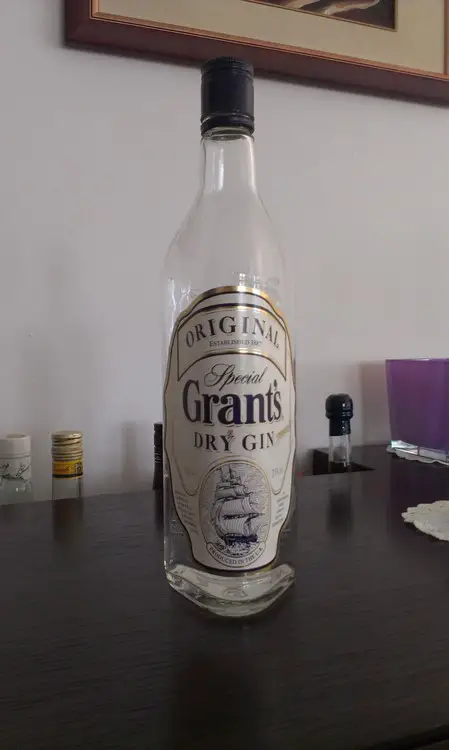Table of Contents
Recognizing Grants Gin (Grant Drink)
A couple of days later, my Dad and I got to discussing the gin he’d bought me.
He told me again that he’d settled on Grant’s Gin because the name was familiar. It wasn’t familiar to me, so I decided to find out more. “How are you familiar with the name Grant’s, Dad?”, I asked.
Surprised that I would even ask such a question, my Dad mentioned Grant’s Scotch Whisky.
Duh! Of course, Grant’s as in Grant’s Scotch Whisky! Now, I knew why my father was familiar with the name Grant’s.

I was excited (as I always am when I find out something new)! Grant’s made gin too?
How had I never known this, almost three decades into my life?
I quickly rushed to the pantry to check out the bottle again.
If you would like to more about Grant’s Gin, click here. To tell you a little bit about it it here, though:

Grant Gin, formally labeled as Grant’s Special Dry Gin, is a little-known but once-marketed product from the famed Scottish distillers William Grant & Sons Ltd. While the company is celebrated globally for its premium whiskies like Glenfiddich and The Balvenie, and more recently for revolutionizing the gin market with Hendrick’s, it also briefly produced a traditional dry gin that is now largely forgotten. Though no longer in production, Grant Gin represents an important chapter in the company’s diverse spirits portfolio—a chapter that bridges the gap between classic distilling tradition and the later emergence of modern craft spirits.
Origins and Production of Grants Gin
Grant’s Gin was produced at the Girvan Distillery, located in Ayrshire, Scotland.
Girvan was established by William Grant & Sons in 1963 to support their growing demand for grain whisky, but it also became a base for the distillation of other spirits, including gin and vodka.
During the 1980s and 1990s, Grant’s Gin was distilled, bottled, and distributed under the same banner as the company’s more prominent whisky lines. The product was most commonly sold in the UK and select international markets, though it never achieved the commercial penetration of competitors like Gordon’s or Beefeater.
As a London Dry–style gin, Grant’s Gin stayed close to tradition. It featured a straightforward botanical profile that emphasized juniper, along with coriander, citrus peel, and other classic gin botanicals.
Unlike today’s craft gins, which often experiment with exotic ingredients and flavor-forward profiles, Grant’s was made to be clean, dry, and versatile—suitable for classic cocktails like the gin and tonic or martini.
Its packaging was simple and unpretentious, with branding that reflected the heritage of the Grant name rather than pushing a bold marketing concept.
Decline and Discontinuation
By the late 1990s, the spirits market was beginning to shift. Consumer tastes were evolving, and a new wave of interest in premium and artisanal gins was beginning to take hold. Sensing this shift, William Grant & Sons made a strategic decision that would ultimately eclipse their earlier gin offering. In 1999, the company launched Hendrick’s Gin, a cucumber- and rose-infused gin with Victorian-style branding and a distinctive apothecary bottle. This was a sharp departure from the traditional style of Grant’s Gin and quickly set Hendrick’s apart in an increasingly competitive market.
The success of Hendrick’s redefined the company’s place in the gin category. Rather than competing in the crowded market of traditional dry gins, William Grant & Sons had carved out a niche in the emerging premium sector. As Hendrick’s gained international acclaim, Grant’s Gin was quietly pulled from production. By the early 2000s, it had disappeared from shelves entirely. U.S. trademark records show that the Grant’s Gin label was abandoned, signaling the end of the brand’s official commercial life.
Photo credits: Bright Burgers